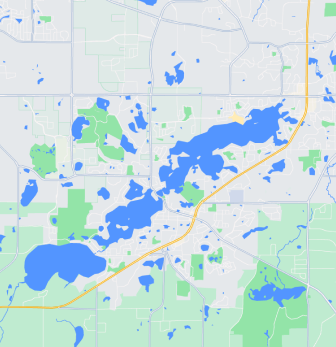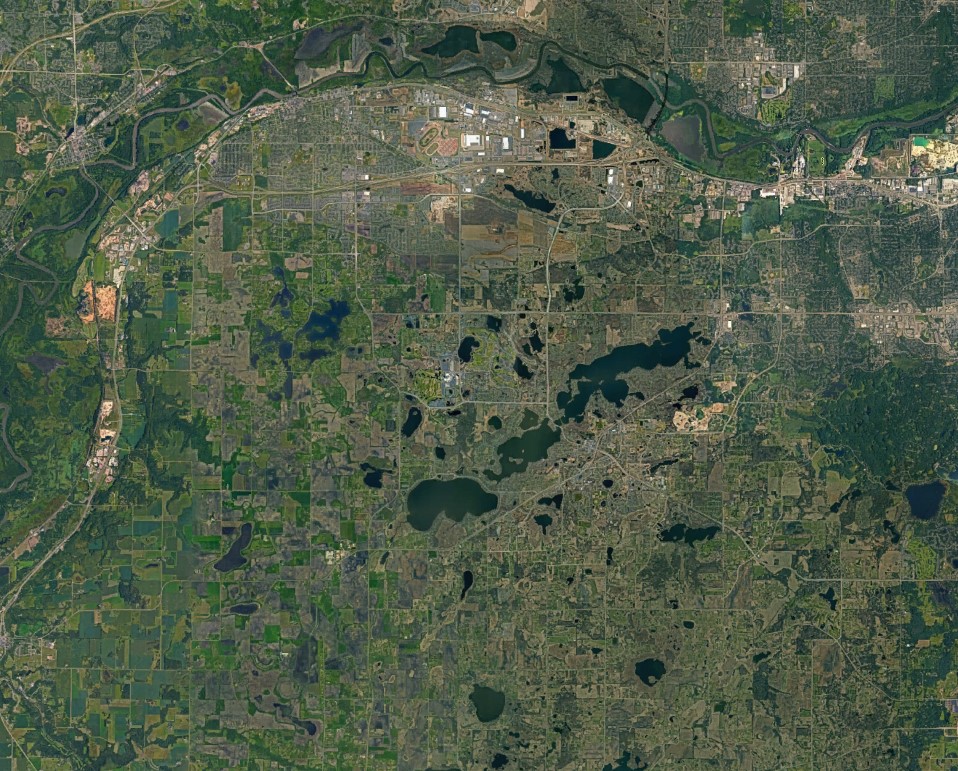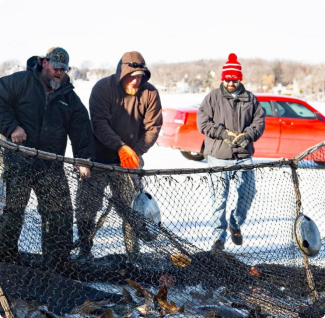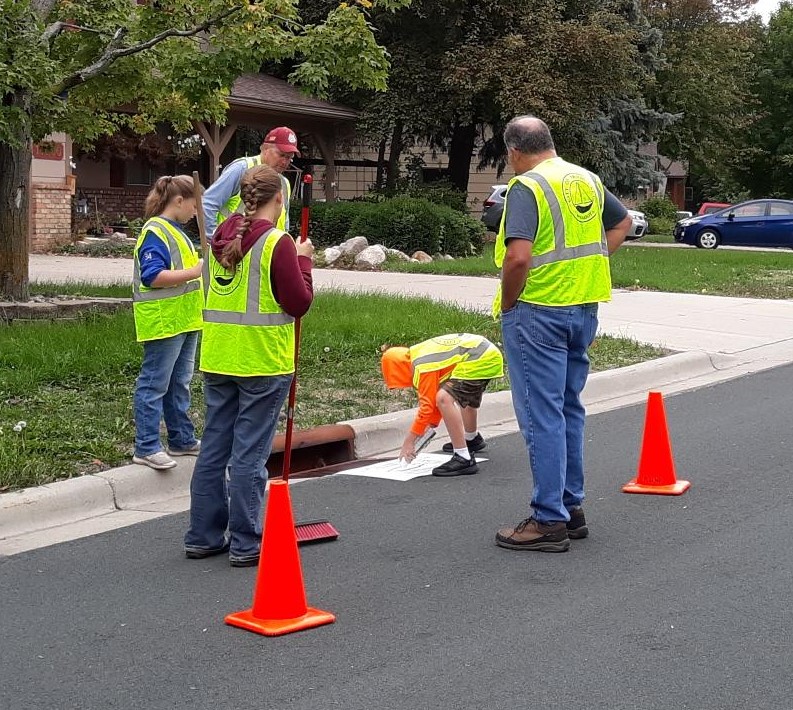Home & Yard
Your yard affects the health of local bodies of water
Stormwater that runs off your yard and driveway eventually makes its way to the lake – often faster than you think! That water not only adds to lake levels, it also carries sediment, nutrients, and other harmful chemicals into the lake.
Minimize salt use
Aerate your lawn
Use a rain barrel
Plant a raingarden
Point downspout into grass
Properly dispose of waste
Lawn and Garden
Did you know that some lawn care practices can be bad for the environment? Choosing the right fertilizers and using them conservatively, managing grass clippings and leaves, picking up pet waste, and maintaining grass height can go a long way toward supporting a healthy lawn and protecting our waterbodies.
When planning how to maintain your lawn consider the following:
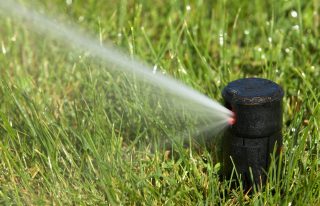
- Choose grasses and flowers that use less water
- Rake and collect your leaves, or mulch them to use on your property
- Landscape with native plants
- Add a buffer between your lawn and waterbodies
- Reduce fertilizer use
- Reduce (or eliminate) pesticide use
Fertilize the Lawn, Not the Lakes and Rivers
- Choose a zero-phosphorus fertilizer.
- Fertilizers containing phosphorus are not allowed by law on established lawns and turf in Minnesota unless a soil test or plant tissue test shows the need.
- Sweep spilled fertilizer off paved surfaces.
- Only apply fertilizer when grass is growing to minimize runoff
- Mow grass as the highest allowable cut. Keeping grass over 3" allows roots to take up nutrients and water more efficiently.
For more info:
Watch the video series!
Improved Lawn Maintenance: Good Choices for Clean Water
Learn responsible practices to keep lawns healthy and attractive while preventing harm to our rivers, lakes, streams and groundwater! For residents, homeowners, business owners and seasonal workers. Watch the 3 part video series now! Video Produced by the Mississippi Watershed Management Organization.
Do you know how much water your lawn actually needs? Your lawn only needs 1 inch of water per week – that includes any rain we’re received! In fact, rain sensors are now required on all newly-installed sprinkler systems. The University of Minnesota has some great resources to learn more about irrigating your lawn.
Deep, infrequent watering is better because it allows the grass to develop deep, strong root systems that are more drought tolerant and can extract water from a much larger volume of soil. By comparison, short, frequent watering causes shallow roots in turf grass which are easily stressed by drought.
Learn about water restrictions and conservation in your city:
Lakeshore owners can use lake water to water the lawn! Using lake water to irrigate your lawn will save you money on your water bill, pull less water from the aquifer and feed your lawn free fertilizer (thanks to nutrients in the lake water). Using a lake irrigation pump is an easy way to water your lawn and reduce your summer water bill.
Don't live on a lake? Rain barrels are a great option for you! Rain barrels collect water from your downspout for future use in your yard and landscape plants. This is a great way to save on your water bill and to keep storm water from flooding across your lawn and into storm drains. Scott Soil and Water Conservation District has some great information on rain barrels and even sells them at their annual tree or plant sales.
Rain gardens are planted into low areas in the ground and filled with deep-rooted native plants and flowers. Instead of flowing across your yard and into storm drains, storm water will collect in these rain gardens and be filtered by the deep rooted plants growing there. Rain gardens are great for everyone: they attract birds and butterflies, look beautiful, are easy to maintain through drought and flood conditions, help with flooding, and are great for water quality in the lakes and streams nearby. Rain gardens don't take much work once they are established and add lots of life to your landscape.
Read our Raingarden Fact Sheet for more information about the benefits of rain gardens and how to install one on your property.
Other resources include:
- Native Plant Selection Tool (Blue Thumb)
- A Step-by-Step Guide to Rain Gardens
- Native Plant Kit Order Form
Want to install a raingarden? Interested landowners can contact Scott SWCD for more information and assistance in getting started. Visit our Training and Workshops page to find upcoming events.
Waste & Chemical Management
All de-icers, including rock salt, impact the environment. When snow melts, de-icers travels to our lakes and rivers through storm drains. Just one teaspoon of salt can pollute five gallons of water, and it never disappears or breaks down. The only way to keep salt out of our local waters is to minimize usage. To reduce the impact of salts to our environment, try these tips:
- Remove as much snow as possible with a shovel or snow blower.
- Choose the correct products – different products work at different temperatures. Normal rock salt (sodium chloride) is not effective below 15°F.
- Use sand or poultry grit for traction instead of rock salt.
- Use the appropriate amount of salt and apply only where needed – less than 4 cups of product will cover an average two-car driveway and sidewalk. If you see salt on dry pavement, it was overdone!
- Sweep up excess salt (and sand) once ice is gone & reuse it later.
Want to learn more? Watch this Winter Maintenance Workshop for homeowners presented by Scott Soil & Water Conservation District staff.
Motor oil, gasoline, cleaning chemical, leftover paint and pesticides and unused medications are all common household products that can create big problems if they reach our lakes, streams, and wetlands. You should NEVER dispose any of these materials in storm drains, which are connected directly to our lakes, streams and wetlands without treatment.
Unused and expired drugs and medications can be anonymously dropped off for safe disposal at several locations in Scott County, including at the Prior Lake Police station through the Take it to the Box program. Old medications and drugs should NOT be flushed down the toilet or drain because wastewater treatment plants are not designed to remove pharmaceuticals from wastewater.
Scott County Household Hazardous Waste facility: Fortunately, Scott County has a program for residents to properly disposing of these and other household hazardous wastes. You can drop off many household hazardous waste items at the Scott County Household Hazardous Waste facility located on Highway 282 (near the intersection with CR 13). More information on household hazardous waste and a list of accepted items can be found on the Scott County HHW Facility website or by calling 952-496-8652. Find a list of other locations to dispose of household hazardous waste items here.
If you see anyone dumping any substance other than stormwater in roadside ditches and storm drains, please report it to the District by calling (952) 447-4166. For potentially hazardous materials and petroleum spills, call 9-1-1 first when there is an immediate threat to life or property.
Read our Illicit Discharge Fact Sheet to learn more about identifying illicit discharges.
Scoop the poop – pick up after your pet and dispose of their waste in the trash or toilet
Not only is pet waste stinky and unsightly, it can also impact our water quality. Poorly managed animal waste can present a serous threat to our soil, groundwater, fish and our health. Contaminants in animal waste contain E-coli bacteria, phosphorus, and other nutrients that cause excessive aquatic plant and algae growth.

